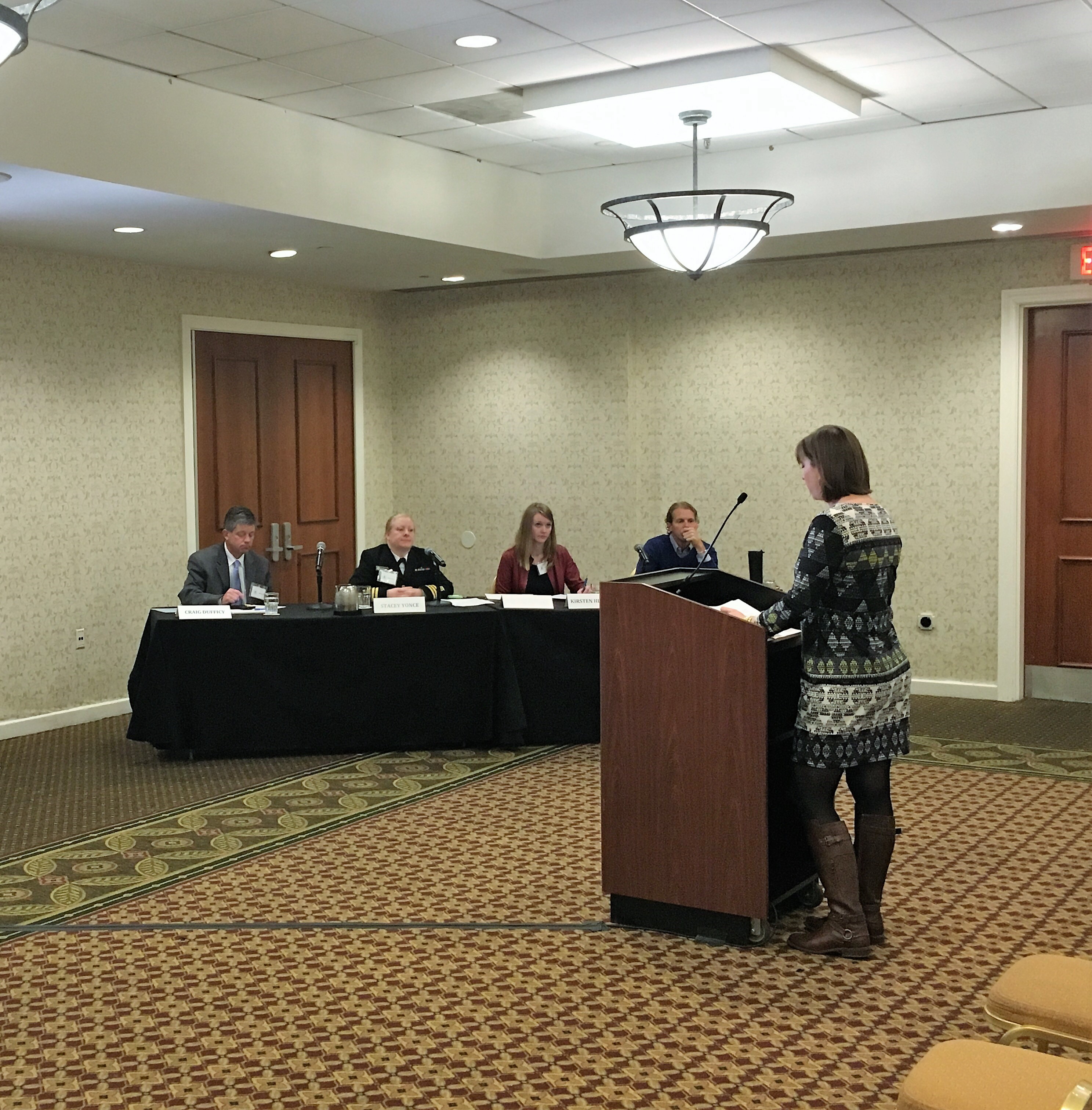Good Climate News this Week: Rules to Cut Pollution, an Offshore Wind Transmission Plan, Emissions Reduction in the EU, and More!
Apr 15, 2024
Under Administrator Scott Pruitt, the Environmental Protection Agency (EPA) has proposed to roll back important safeguards that guide the cleanup and disposal of coal ash, and today the EPA held a public hearing on this misguided proposal. LCV Legislative Representative Madeleine Foote testified before the EPA in Arlington, Virginia, where she made the case for keeping these safeguards in place—abandoning them would pose a clear hazard to our health and the environment.
As she put it, “The science on the dangers of coal ash has not changed; in fact, it has only grown stronger. Coal ash is a clear hazard to our public health and environment, yet this EPA is backing away from the safeguards it established to protect us against it, just as we’re starting to see the benefits the rule provides.”
Read more of Madeleine’s testimony below and click here to tell Pruitt that we need the EPA to protect our communities from toxic coal ash.

Testimony on Coal Ash Rule Repeal
By Madeleine Foote, legislative representative at the League of Conservation Voters
Good morning. My name is Madeleine Foote and I’m here on behalf of the League of Conservation Voters and our over two million members and supporters.
Thank you for the opportunity to speak to you today on EPA’s proposal to amend and rescind the agency’s 2015 rule governing the disposal of toxic coal ash, which jeopardizes our health, our environment, and our communities. LCV opposes the administration’s proposal to rollback these commonsense safeguards and its attempts to continue the free pass power plants have had to pollute our water and endanger our families.
Each year, coal-fired power plants in the U.S. generate more than 105 million tons of coal ash that is stored in industrial ponds, which research has consistently shown are leaking toxic pollutants into our waterways. Coal ash contains an unappetizing brew of dangerous carcinogens, neurotoxins, and poisons such as arsenic, cadmium, lead, mercury, selenium, boron, and other heavy metals and radioactive elements. Clearly, none of these toxins, which increase the risk for cancer and heart disease and can cause permanent brain damage in children, belong in our drinking water; yet, by rolling back these safeguards, that is exactly what the EPA is sanctioning.
We have seen what happens when the federal government abdicates its responsibility for dealing with coal ash, as this proposal would do. Decades of inadequate oversight by the states and inaction by the EPA contributed to the 2008 disaster in Kingston, Tennessee, when a dam operated by TVA burst, covering the community with over 1.2 billion gallons of toxic waste. Then again, in 2014, a spill by Duke Energy’s Dan River plant polluted over 70 miles of the river in North Carolina and Virginia, jeopardizing the drinking water of numerous communities.
But it’s not just coal ash spills that harm our waterways. EPA’s own data, including new groundwater data gathered because of the 2015 rule, has shown that nearly every coal ash pond in the country is leaking harmful chemicals into groundwater. These pollutants make our water unsafe to drink, threatening children and the elderly the most. More than 1.5 million children live near coal ash ponds, and an astounding seventy percent of these ponds are disproportionally located in low-income communities.
Recently, I had the opportunity to take a boat tour of the Chesterfield Power Station, Virginia’s largest coal-fired power plant, and its coal ash ponds, which sit on the banks of the James River. The sunshine, array of trees, and eagles and osprey flying overhead created a sense of calm that only nature can bring. However, the beauty of the river hides a dirty secret-Chesterfield’s coal ash ponds have leaked alarming amounts of zinc, nickel, copper, lead, and arsenic into the recreation areas used by thousands of fishermen, hikers, bikers, boaters, and families. These heavy metals jeopardize the health of all of those who rely on the river and threaten the community’s top tourist recreational draw. To know that such an awe-inspiring place harbors such dangers is heartbreaking and unacceptable.
The science on the dangers of coal ash has not changed; in fact, it has only grown stronger. Coal ash is a clear hazard to our public health and environment, yet this EPA is backing away from the safeguards it established to protect us against it, just as we’re starting to see the benefits the rule provides. Though not the strongest possible rule, the 2015 standards have already led coal plant operators to establish publicly accessible websites and fugitive dust control plans, conduct hundreds of coal ash pond inspections, and publish new groundwater quality data. Other pieces of the rule, like requiring shutdown of leaking ponds and cleanup of contamination, would have a huge beneficial impact for our communities. The requirements established by the EPA in 2015 already took into consideration the requests of utilities, states, and recyclers, and going back on those now only shows bad faith by these operators and a willingness of the administration to prioritize the interests of polluters over the health of our families and environment.
In closing, we ask the EPA to abandon this proposal to rollback these critical safeguards that aim to better protect our public health and the environment from the dangers of toxic coal ash. Instead, we encourage the agency to focus on strengthening their rules and holding power plants accountable for the widespread damage they are causing to our waterways, our health, and our environment.